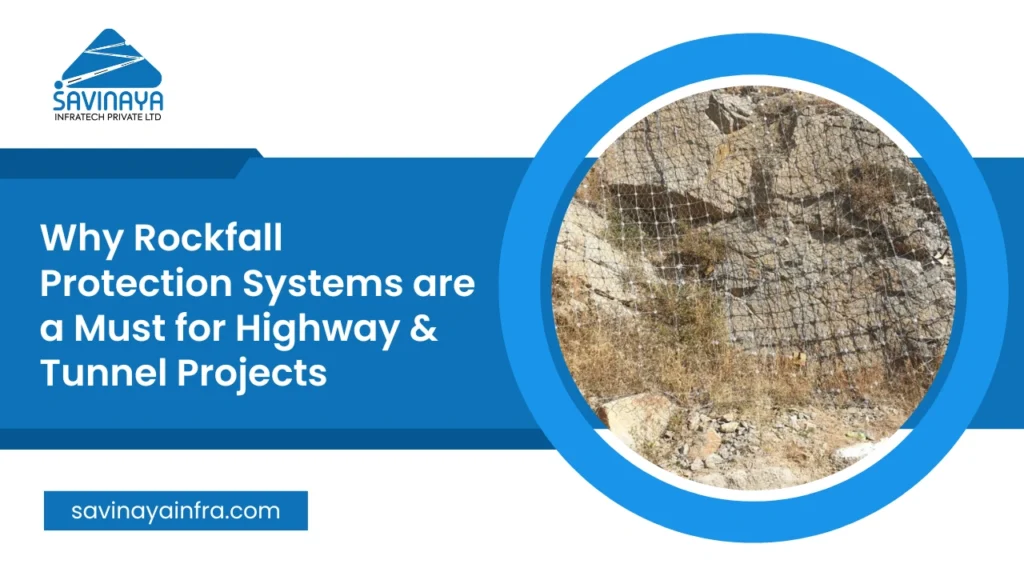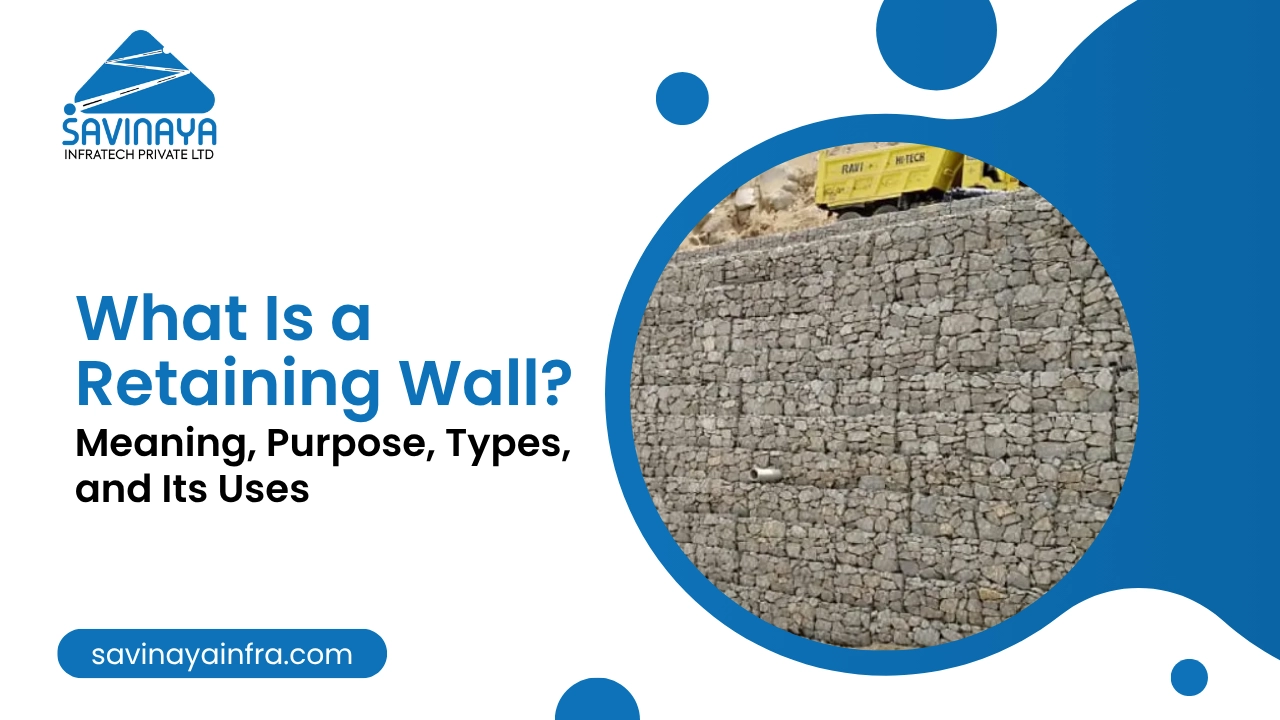Driving through scenic mountain highways or newly built tunnels might seem smooth and effortless, but behind the scenes, there’s a powerful engineering system at work, keeping people and vehicles safe from one of nature’s most unpredictable threats: falling rocks.
Rockfall protection systems are not just a smart addition to highway and tunnel construction—they are an absolute necessity. These systems defend roads from dangerous debris, minimise damage during rockslides, and most importantly, save lives. In this blog, we explore the types of rockfall protection, why rockfall protection is necessary for highways & tunnels, and how to choose the right solution for your infrastructure project.
Table of Contents
Types of Rockfall Protection Systems Used in Infrastructure
Modern infrastructure relies on various types of rockfall protection systems to manage the risks associated with unstable terrain. Here are the most widely used solutions:
1. Rockfall Barriers
These are flexible or rigid barriers installed along slopes to catch or deflect falling rocks before they reach the roadway. They’re especially common in mountainous regions where rocks frequently dislodge due to weather or vibrations.
2. Rockfall Netting
Made from steel or high-tensile mesh, netting is draped over rock faces to secure loose debris. It prevents rocks from gaining momentum and protects the slope itself. It’s a vital component of passive rockfall protection.
3. Catch Fences
Installed along the base of slopes, catch fences are designed to stop falling debris from reaching roads, tunnels, or railway lines. These are typically used in high-risk areas where debris can fall at high speed.
4. Slope Reinforcement & Anchoring
Drilling steel anchors into rock faces adds structural integrity and prevents collapse. This form of slope protection is widely used in both tunnels and exposed highway cuts.
Each of these rockfall safety solutions is selected based on terrain type, rock size, weather conditions, and proximity to human activity.
You May Also Read: Rockfall Mesh Vs Barriers Vs Fences – Which Protection System is Best for Your Site?
Why Highways and Tunnels Are Prone to Rockfalls?
The reason is simple: highways and tunnels often pass through or under unstable geological formations. Here’s why they’re especially vulnerable:
- Excavation activities loosen natural rock structures
- Heavy rainfall erodes slope material and dislodges boulders
- Seismic activity and traffic vibrations can trigger sudden rockfalls
- Vegetation loss during construction weakens slope stability
Without effective rockfall protection for highways, even a small dislodged rock can lead to major accidents or road closures. In many cases, rockfall protection prevents landslides by stabilizing slopes and controlling debris movement. Tunnel entrances are particularly at risk, as falling debris often accumulates near portals or open cuts.
Key Benefits of Rockfall Protection Systems
Installing rockfall protection systems comes with multiple benefits that go far beyond basic safety:
- Prevents road closures due to debris or landslides
- Reduces accident risk for vehicles and workers
- Preserves structural integrity of tunnels and retaining walls
- Extends the lifespan of transportation infrastructure
- Boosts public confidence in route safety
For any slope-heavy region, slope stabilisation for highways is not just about engineering—it’s a commitment to public safety.
How to Choose the Right Rockfall Protection System for Your Project?
Selecting the correct rockfall protection system depends on several critical factors:
- Slope angle and height: Cliffs may need active netting and anchoring, while gentle slopes might only require fencing.
- Rock size and frequency: Larger, frequent falls demand more robust systems like reinforced barriers.
- Environmental conditions: Areas with heavy rainfall or snowmelt need solutions that resist corrosion and handle water flow.
- Project scope and budget: Combining several types of rockfall protection systems often delivers the best results.
Working with an experienced engineering partner helps assess risk levels and customise a plan using the most suitable rockfall safety solutions.
You May Also Read : Rock Fall Barriers vs Netting: Which Protection System is Best
Why Choose Savinaya’s Infra Tech Rockfall Protection System for Your Project?
Savinaya Infratech’s approach to rockfall protection systems goes beyond just installation. We begin with detailed geotechnical assessments, design slope-specific solutions, and implement robust rockfall protection for highways and tunnel entrances using industry-leading materials and methods.
Our in-house team has deep expertise in slope protection and stabilization, ensuring long-lasting performance even in extreme conditions. Whether it’s mesh netting, catch fencing, or reinforced barriers, we tailor the system to meet your site’s unique challenges.
Clients trust us for:
- Proven experience with complex terrain
- End-to-end execution, from design to deployment
- Focus on compliance, safety, and sustainability
- Real-time monitoring and maintenance services
Conclusion
Every highway carved into a hillside and every tunnel opening at the base of a slope carries an invisible risk until proper safety measures are in place. Implementing rockfall protection systems early in your project not only prevents future disasters but also enhances the long-term reliability of your infrastructure.
At Savinaya Infratech, we understand the terrain, the risks, and the proven strategies for rockfall protection for highways and tunnels. Let us help you build safer roads and resilient structures with trusted slope protection and stabilization solutions. Get a Custom Rockfall Protection System for Your Project!


